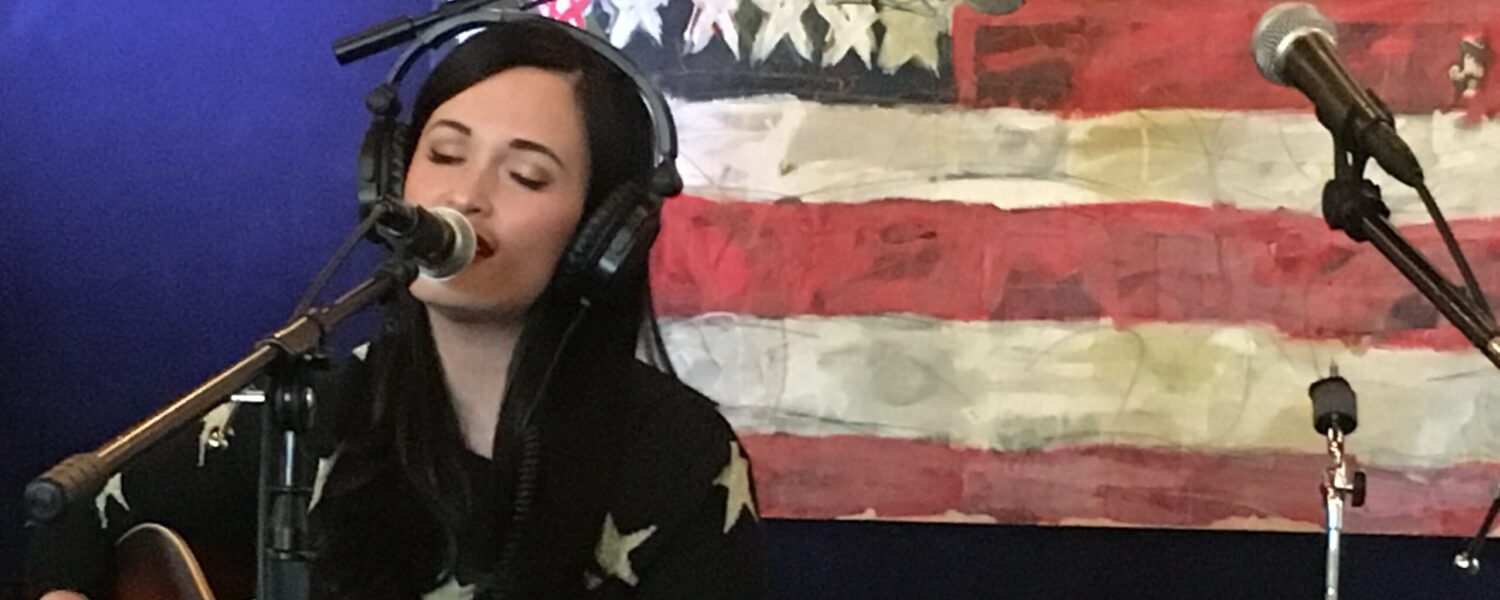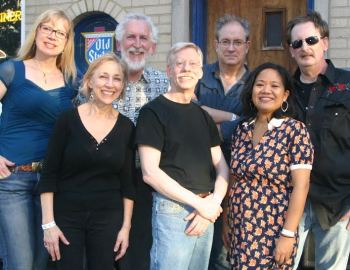By Rich Gordon
What’s Americana music?
Is it “American roots music based on the traditions of country”? That’s how the Americana Music Association defined Americana in 2003.
Or “music that honors and is derived from the traditions of American roots music”? That was the association’s definition in 2007.
Or “contemporary music that incorporates elements of various American roots music styles, including country, roots-rock, folk, bluegrass, R&B and blues”? That’s the core of the definition today on the association’s website.
The definition keeps getting longer, and the emphasis on country music keeps being diluted. Instead of being recognized as the key ancestral homeland for Americana music, country is now listed as one of five different genres “incorporated” into Americana music. I think this is a mistake.
On the eve of the Americana Music Festival in Nashville, why does this matter to me? I’m a member of a Chicago-based band (Twangdogs) that plays country-rock music — cover songs, mostly. When someone asks me what kind of music my band plays and I say, “Americana,” the overwhelming response is “What’s that?”
Maybe part of the problem is that the “official” definition keeps changing.
When you think of a kind of music — say, “country” or “classic rock” or “hip hop” — what comes to mind? A few possibilities: radio station formats, music-festival motifs, the musical genres associated with certain concert venues, the answer to the question “What kind of music do you like?” And, of course, the type of music that a cover band plays.
“Americana” music, as a term, was born in 1995 when the Gavin Report made used the name for the 12th radio format the publication was tracking — meaning, what songs were being played on what stations. At the time, Americana referred to a blend of two different musical strains:
- “alternative country” music by artists like Gillian Welch, Steve Earle and Lucinda Williams, and Steve Earle,
- new music from more senior country artists like Waylon Jennings and Merle Haggard — who, the Gavin Report’s Rob Bleetstein said at the time, “are too left field for Nashville, too twangy for AAA [adult album alternative].”
Americana never really caught on as a radio format — there were 90 reporting radio stations, mostly operated by colleges, non-profits and public radio stations — before Gavin shut down its Americana chart in 2000. By that time, the Americana Music Association had been formed, and it now oversees the official Americana radio chart.
Because the association is tightly linked to the music industry — record labels, promoters, radio station programmers — it understandably emphasizes “contemporary” music. But in an article for NoDepression.com earlier this month, I argued that in expanding beyond country-music influences, the association has diluted the focus for “Americana.”
Instead, I argued that Americana should encompass country-rock music over a longer span of time: “country rock generations,” taking in all of the periods when country music intersected, influenced and blended with rock music. That can encompass everything from:
- “Rockabilly” like Buddy Holly, Bill Haley and early Elvis Presley
- 1960s-70s country-rock, from Bob Dylan’s “Nashville Skyline” to the Byrds’ “Sweetheart of the Rodeo” to Creedence Clearwater Revival, New Riders of the Purple Sage, the Eagles and Jackson Browne.
- 1970s Southern rock like the Allman Brothers and Marshall Tucker Band.
- 1970s-80s country-punk like the Blasters, X and Lone Justice.
- 1980s-90s alt-country (aka “insurgent country,” “No Depression,” etc.) such as Uncle Tupelo, Wilco, Son Volt and Whiskeytown.
- Country-influenced acts on the “jam band” circuit, including old names (Allman Brothers and Little Feat) and newer ones like Old Crow Medicine Show and the Black Crowes.
- Veteran but still vibrant country-centered performers like Emmylou Harris, Rodney Crowell, Rosanne Cash and Jim Lauderdale.
- Country artists who have revived their careers — and created compelling contemporary sounds — through inter-generational collaborations (Johnny Cash and Rick Rubin, Loretta Lynn and Jack White, Alison Krauss and Robert Plant).
- The kinds of young performers who now show up prominently on the Americana chart: Shovels and Rope, Justin Townes Earle, Jamestown Revival, Sturgill Simpson and of course, the Avett Brothers.
This definition is certainly broad enough to stock a festival — and in fact, this year’s AmericanaFest (put on by the Americana Music Association) is presenting a mix of music that’s consistent with this approach. Jackson Browne and Loretta Lynn are receiving lifetime achievement awards, the Avett Brothers are headlining the Saturday night outdoor concert, and the festival features performers from multiple generations — from Lee Ann Womack to Jim Lauderdale to Rodney Crowell to Angaleena Presley to Cale Tyson.
The “country-rock generations” model also makes for a great setlist for a cover band — one that can appeal to many generations of music fans. As I wrote for NoDepression.com,
A 1970s Eagles or Jackson Browne fan would like the Avett Brothers or Jamestown Revival. Fans of Old Crow Medicine Show would appreciate Buddy Holly. All of them might enjoy Whiskeytown or Uncle Tupelo. And music from these performers — and many others — can fit together nicely on a setlist or a playlist.
To demonstrate the power of a “country-rock generations” model, let me use as an example the working setlist for Twangdogs’ upcoming show on Saturday afternoon (Sept. 20) at the 12th and Porter club in Nashville. We’ll be playing songs that cover 57 years of country-rock history, including examples from six decades of music. Here they are listed in chronological order based on their first release:
- “Oh Boy” (Buddy Holly, 1957) – also recorded or performed by many others, including the Everly Brtohers, the Nitty Gritty Dirt Band and the Grateful Dead.
- “Gone Gone Gone” (Everly Brothers, 1964) – also released in 2007 by Robert Plant and Alison Krauss.
- “Dead Flowers” (Rolling Stones, 1971) — from the period when the Stones were hanging out with Gram Parsons, also recorded by Townes Van Zandt, New Riders of the Purple Sage and played live by Steve Earle and Jerry Lee Lewis.
- “I Know You Rider” — our version of this old blues song is modeled after the Grateful Dead’s 1972 recording, but the song has been recorded by many others, including Janis Joplin, the Seldom Scene and the Byrds.
- “Best of My Love” (Eagles, 1974)
- “Poor, Poor Pitiful Me” (Warren Zevon, 1976; Linda Ronstadt, 1977) – also recorded by country star Terri Clark (1996)
- “Running on Empty” (Jackson Browne, 1977)
- “Wall of Death” (Richard and Linda Thompson, 1982)
- “Hasn’t Hit Me Yet” (the Canadian band Blue Rodeo, 1993)
- “You’re Still Standing There” (Steve Earle and Lucinda Williams, 1996)
- “Your Life is Now” (John Mellencamp, 1998)
- “The Captain” (Kasey Chambers, 1999)
- “Wagon Wheel” (Old Crow Medicine Show, 2004)
- “In State” (Kathleen Edwards, 2005)
- “I’m With the Band” (Little Big Town, 2007)
- “Down by the Water” (Decemberists, 2011)
- “Hell on Heels” (Pistol Annies, 2011)
- “Ho Hey” (Lumineers, 2012)
- “California (Cast Iron Soul)” (Jamestown Revival, 2014)
These songs will be packaged into a set we’re calling “Love, Americana Style: A Song Cycle of Romance, Relationships and the Road.” Based on our experience playing songs like these in the Midwest — and in Scotland, where we played the Edinburgh Fringe Festival last year — there’s something in the set to appeal to every different musical generation. Which is exactly what a cover band needs to play.
Rich Gordon is a college journalism professor, long-time country-rock fan, subscriber to the late, lamented No Depression magazine — and member of Twangdogs, a Chicago country-rock cover band.

